YOUNG horse classes are there for the betterment of dressage. By doing so everyone is trained – judges, riders and horses.
Wise words from dressage master Christoph Hess during the Judges’ Gala run by Dressage Ireland at Spruce Lodge.
The German native has served as an international FEI four-star judge for dressage and eventing, as well as working with the German Equestrian Federation.
Hess is an absolute fountain of knowledge when it comes to the development of young horses and those in attendance over the two days clung onto every word.
Hess has travelled the world – including to judge at Necarne and Tattersalls – and Dressage Ireland are to be commended for inviting him back to Ireland to host what was the fifth gala since 2015.
Previous speakers include Ireland’s own Gisela Holstein, Katrina Wurst of Germany, and British experts Ferdi Eilberg, Jo Graham and Gareth Hughes.
With the Horse Sport Ireland Development Series now in its second year, the topic of this year’s Gala was the principles of judging young horse classes.
Ireland has progressed considerably in dressage in recent years, albeit it on mostly foreign horses, but it is HSI’s ambition to see more Irish-bred young horses coming forward to compete in time.
During each morning session, Hess presented a slide show featuring tests from five, six and seven-year-olds, during which he explained what judges want to see from both the horse and rider.
It became clear that there is a difference between the judging of young horse classes and actual dressage tests.
Important points to note were the horse’s paces, his standard of training, and temperament and natural talent to become a high-class dressage horse.
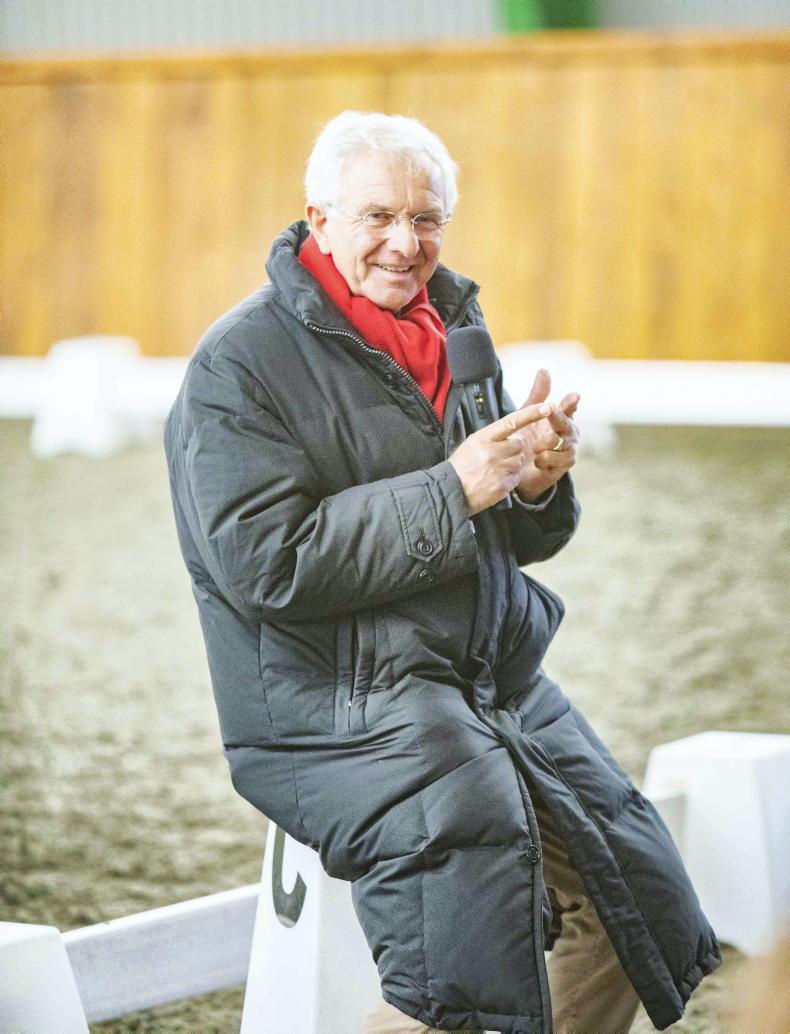
Hess said that minor mistakes such as moments of tension or short breaks of pace should be judged leniently if the horse demonstrates correct training with well-developed paces.
Fundamental mistakes, on the other hand, display poor training and will lead to lower marks. Such errors include tension, stiffness of the back and poor acceptance of the bit.
In a previous visit to Ireland, Hess observed some horses making technical mistakes and noted that it was due to lack of correct training, something that has since improved greatly.
Hess noted that in relation to a horse’s paces, he said: “The trot can be always improved and the walk will come too if you can improve the trot and canter. However, if a horse is limited in the freedom of his shoulder, you have little chance of improvement.”
Each afternoon four combinations – riding horses from aged four up to seven – were given the opportunity to ride tests before being assessed. Suggestions on how to improve were made for both the horse and the rider, with the correct balance of the rider being emphasised.
“You must realise that it’s not all about the horse and dressage is not about just riding some tricks. There’s so much more to it.
“Riders need to maintain a light seat as much as possible.” He encouraged riders to use a rising trot in training. He also said that he is not an advocate of expensive dressage saddles being used on young horses.
Some horses were noted to be behind the leg – when the horse does not respond immediately to a light aid – and it was asked if this was because the riders were trying to do a safe, correct test, or they were showing what they thought the judges wanted to see. Another suggestion was that the riders are not sure what is expected from them in a young horse class.
Hess replied: “Bringing the horses in front of the rider is necessary to train from the first day when the horse is broken in. Many riders all over the world don‘t know this.”
Tara Oliver Donohue rode her seven-year-old gelding Senators Rhonaldo on both days. “Christoph told me that my horse’s party piece is his trot but his canter needed work,” she said. “Once I made some changes, the difference on the second day was tremendous, so much so I got a round of applause.”
The pair have been doing the HSI Development League and won the Advanced at Thurles. “Afterwards he told me if we could get the canter right, he can see us moving up to Prix St Georges by the New Year. That was such encouragement.”
Lucy Cusack also went home hugely positive about her horse Kirktown. Initially Hess noted some lack of fluidity, but after being given some pointers, there was a noticeable improvement. Hess stated that this six-year-old had the potential to reach the top 15 in the FEI WBFSH Dressage World Breeding Championships for Young Horses.
Hess said that not every rider is suited to riding young horses but he was most impressed with the calibre of riding over the two days.
Regular and correct training is the key, he said. “To give you an example of what it takes to succeed, during training some years ago Ingrid Klimke once told me she wanted to get all 10s in a test when I told her she had made two mistakes,” he said. “I had to remind her that you can only get perfect 10s for the halt. She wanted to do the test again but I said there was no need – such was her determination to do better.”
Klimke is one of Germany’s most successful event riders of all time and that same test was performed on Hale Bop. The pair went on to win multiple medals at Olympic, World and European level.
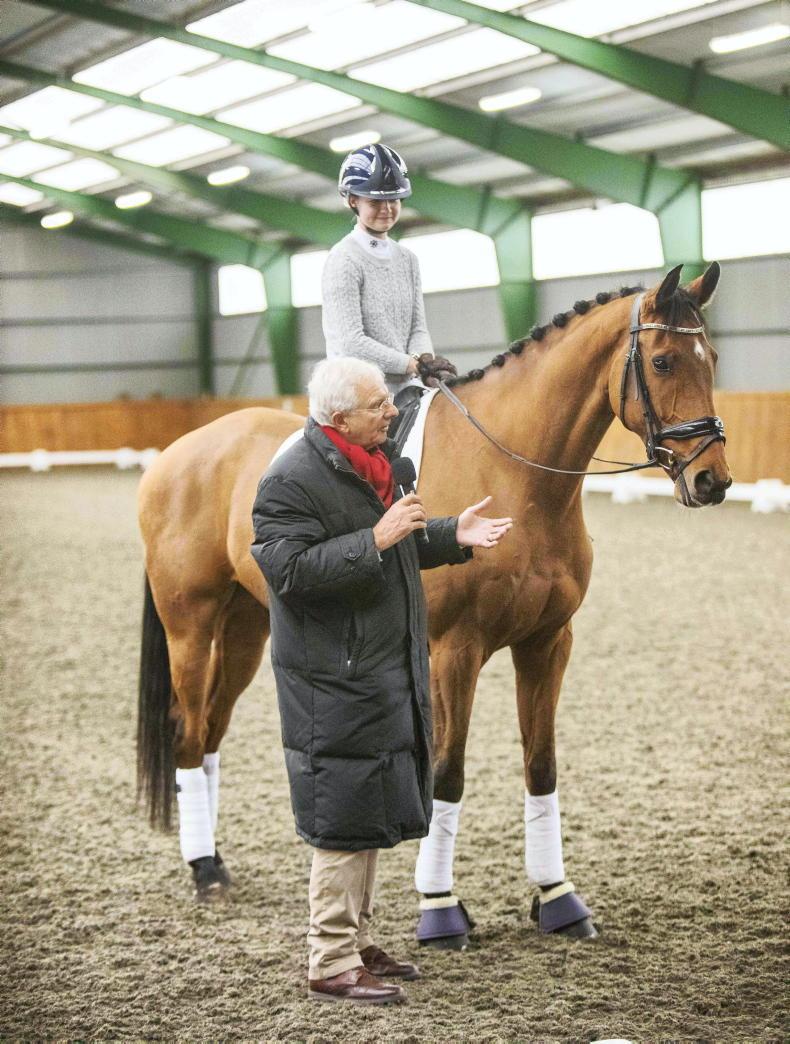
Christoph Hess discusses a test ridden by Emily Robinson with those in attendance at Spruce Lodge \ Siobhan English Photography
Opportunity
During the second afternoon, several Irish judges were given the opportunity to mark tests from five horse and rider combinations.
Hess said that it was important for judges to work together and to assess each combination fairly. “For instance you will have five judges at a Grand Prix. If there is a lot of disparity between scores, it means someone is wrong. They must be a team.”
Hess was on hand to give his opinion on the marks drawn up by the judges and cast his own, while drawing comparisons.
Looking ahead, Hess was asked if Ireland was ready to use FEI tests in dressage. “In order to use the FEI tests it will bring the sport more and more to an international level,” he said. “I wouldn’t do this today or tomorrow but slowly, perhaps in the next three years.
“The riders need to know what level of tests they have to ride. They have to be able to train the horses. We need to realise that the test for the six-year-old horses is much more difficult than tests we had seen this weekend.”
“The riders have to train to do flying changes in the winter before the horses are six. If they don’t, they have no chance of competing at international level.”
With this in mind, Christoph was asked if Ireland should have more test riding/training days specifically for young horses. “Yes, Ireland needs similar days as we had at the Gala. Riders who are interested in these classes should get the opportunity to ride tests,” he concluded.
WHAT THEY SAID:
Marguerite McSweeney, chairperson Dressage Ireland: Christoph was impressed by the young horses he assessed at the gala and expressed that in his opinion these horses could be in the final of any major young horse class internationally. It is most reassuring that not alone have we the calibre of such young horses in Ireland but that they are also being produced correctly.
Heike Holstein’s home-bred Sambuca, in particular, has excelled on the international stage, culminating in a strong performance in the Tokyo Olympics.
Dressage Ireland are hoping to develop young dressage horse classes further, with the aim for a standalone young horse championship into the future.
Mark Ruddock, trainer and judge: It was definitely the best Gala I have attended. Everything Christoph said was so positive and everything was half full.
I was among the judges on Saturday. The judges’ committee acknowledges that we need training so it was a great opportunity to learn. We have an amazing selection of riders and horses and it’s an exciting time for Ireland.
Lucy Cusack, dressage rider: I got a huge amount out of riding at the Gala. I am very grateful to get that opportunity from Dressage Ireland. The standard of horses is increasing rapidly in Ireland and for Christoph Hess to be here and appreciate them as contenders for Verden is very exciting for the sport in Ireland.
Iris Walsh, dressage coach: Christoph’s depth of knowledge and his understanding was immense. He was practical, positive, enthusiastic and honest.
He explained everything according to the training scale.
It was informative to listen to the judges compare their marks and for Christoph to discuss any large disparities that arose. He would then give his own marks and discuss these also which was hugely beneficial to everyone.
HSI Development Series
SIMONE Hession has been competing Irish-bred horses in dressage for many years, and is delighted at the introduction of the Horse Sport Ireland Development Series. “I don’t have any young horses for it this year but I have two I hope to campaign in 2022 – two traditionally bred full-sisters Beezies Dawn Cruise, who is now five, and Beezies Dusk Cruise, who is three.”
Both are by CC Captain Cruise, by Captain Clover, out of the Moot Point mare Beezies Rose.
Hession and some of her Irish Draughts are already familiar names on the dressage scene, with Beezies Big Brother (It’s the Quiet Man) and his half-brother Beezies Double Diamond (Gentle Diamond) now qualified for the Finals at Greenogue on December 12th.
These two geldings are brothers to the great mare Beezies Sue, all being out of Princess of Woodlands, by Pride of Toames.
Beezies Sue, by Sea Crest, competed to Prix St Georges level and won countless titles, including no fewer than eight Leading Irish Draught accolades at the National Championships.
“It is great to see HSI now focusing on Irish-bred horses. It is not before time and for those breeding it will be encouraging to have them compete in these classes with a green passport.”
The Horse Sport Ireland Development Series continues at Ard Chuain in Sligo tomorrow, Sunday, followed by Ballindenisk (November 21st), JAG, Kildare (November 27th) and the finals at Greenogue, Dublin (December 12th).
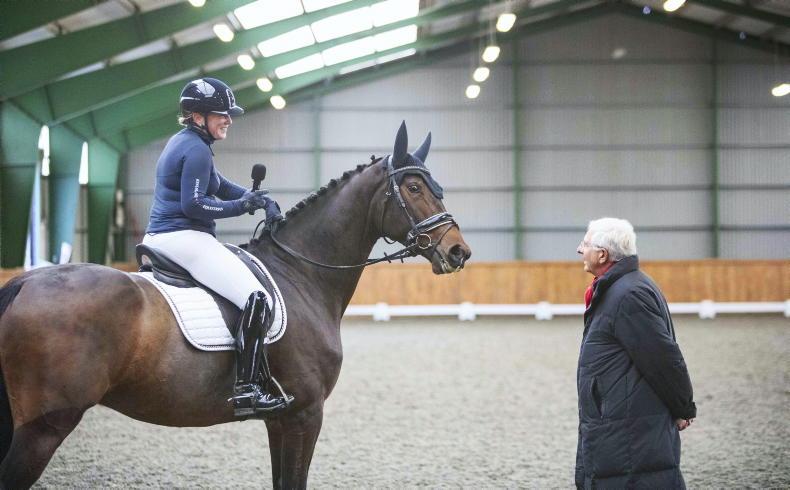

 This is a subscriber-only article
This is a subscriber-only article
 It looks like you're browsing in private mode
It looks like you're browsing in private mode
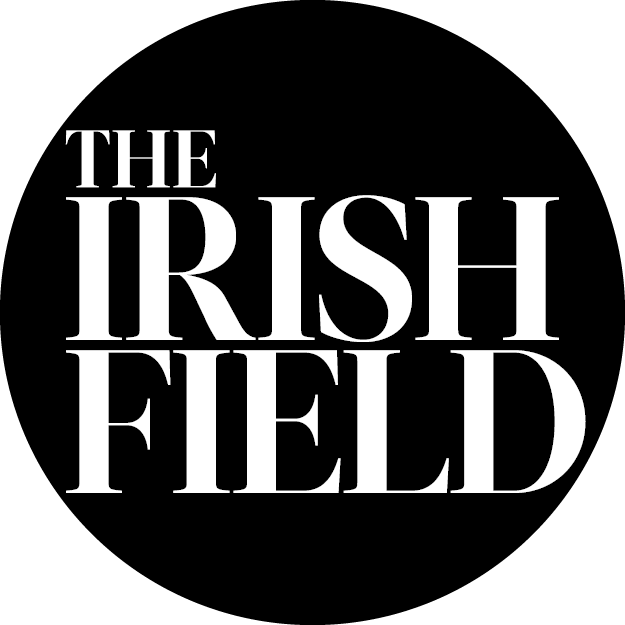



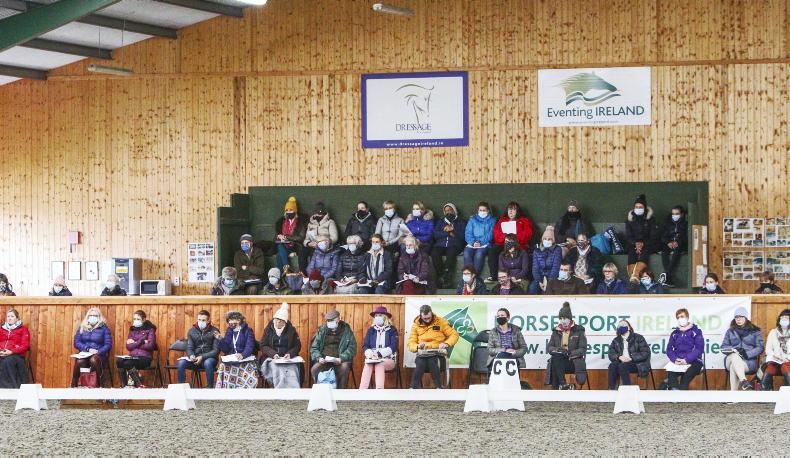



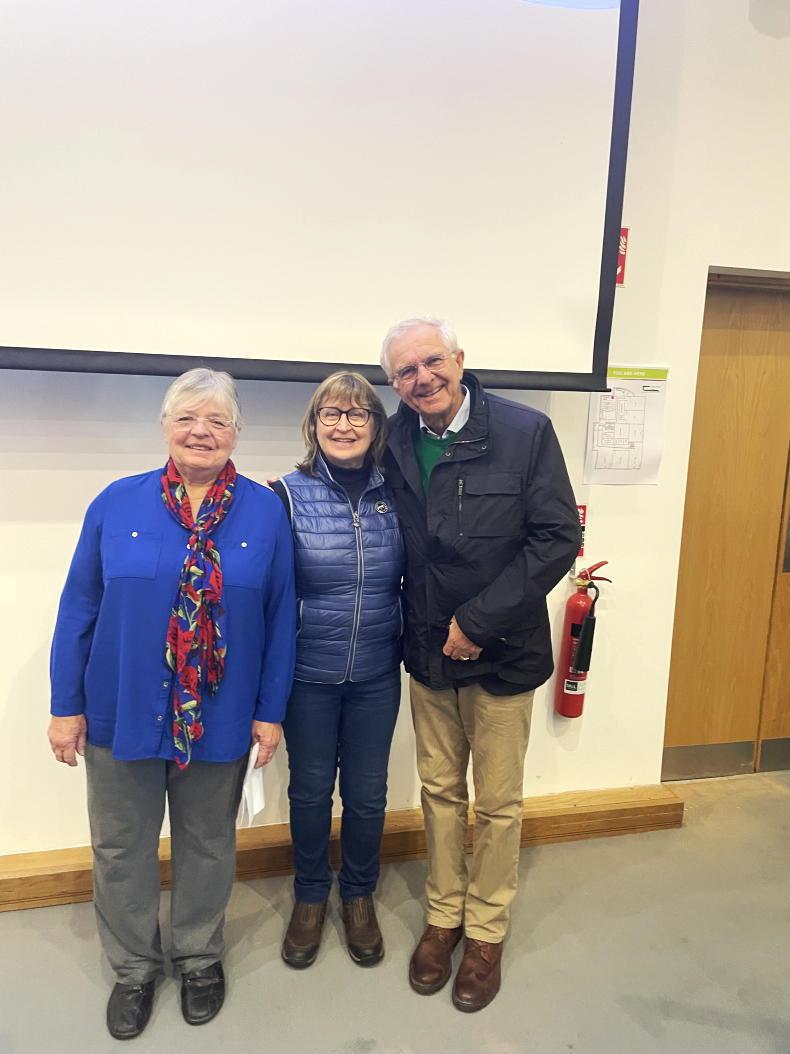

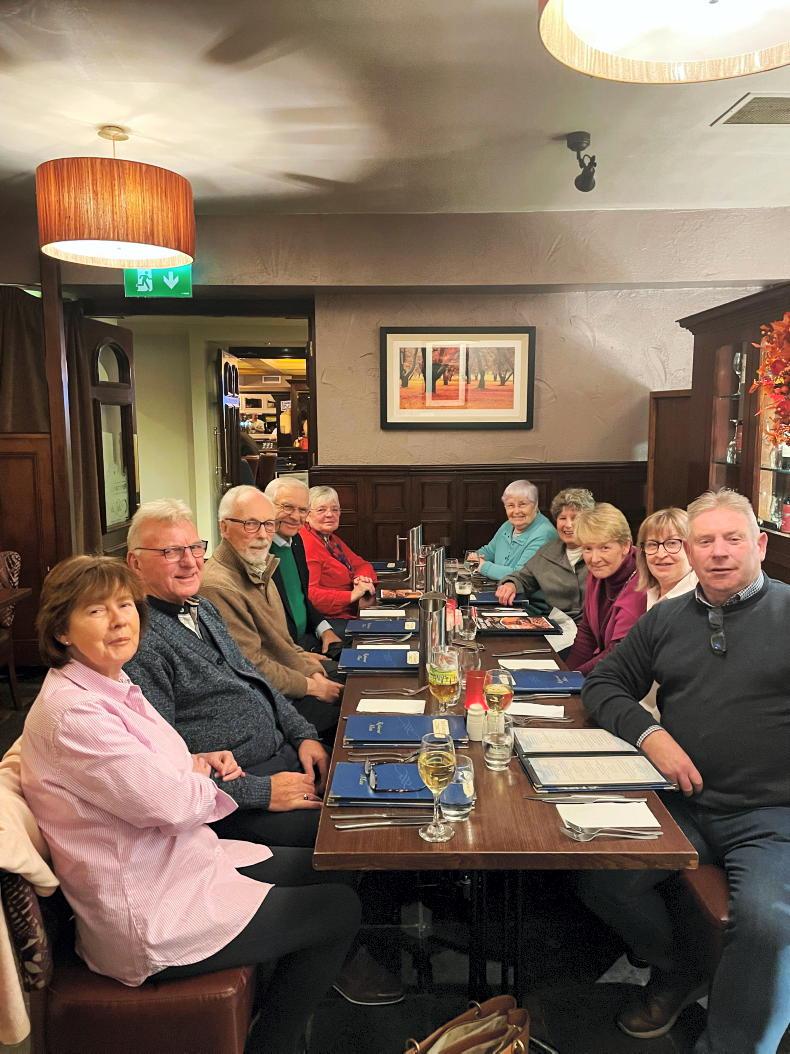


SHARING OPTIONS: